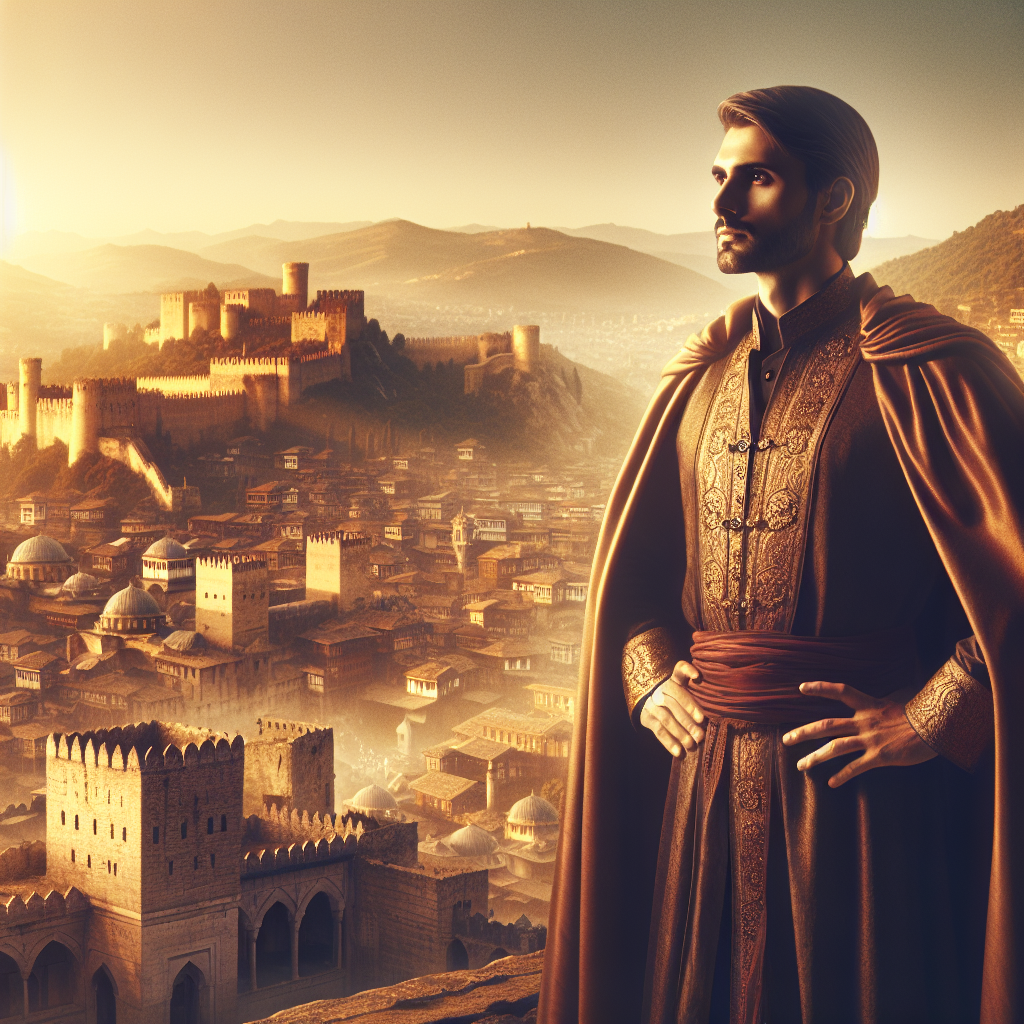When Sultan Mehmed II captured Constantinople in 1453, he didn’t just seize a city—he reshaped the course of history. This monumental event marked the end of the Byzantine Empire and heralded the rise of the Ottoman Empire as a dominant power. But Mehmed’s legacy went beyond military conquest; his governance system played a crucial role in consolidating Ottoman power and expanding the empire. This blog post explores how Sultan Mehmed II transformed a conquered city into the flourishing capital of the Ottoman Empire and established a governance system that influenced the region for centuries.
Establishing Istanbul as the New Capital
The fall of Constantinople was both an end and a beginning. Mehmed’s first major task was to transform the conquered city into Istanbul—the new heart of the Ottoman Empire. This transformation was not merely symbolic but involved a practical overhaul to accommodate the growing needs of an expanding empire.
From Conqueror to Administrator Sultan Mehmed II’s Visionary Governance
Mehmed focused on rebuilding and repopulating the city, attracting people from diverse backgrounds to create a multicultural hub. His efforts were aimed at revitalizing the city’s economy and infrastructure. He initiated key projects like redesigning the Hagia Sophia as a mosque, constructing new palaces, and establishing vibrant marketplaces. These initiatives positioned Istanbul as a central node of trade, culture, and politics.
By creating a thriving capital, Mehmed ensured that Istanbul would be a showcase of Ottoman power and sophistication. The city became a magnet for traders, artists, and scholars from all over the world, enhancing its status as a major cultural and economic center.
Centralized Governance
In governing his vast empire, Mehmed II understood the importance of a strong centralized bureaucratic system. He established a governance structure that allowed for efficient administration and oversight of the empire’s diverse provinces.

Mehmed appointed loyal officials and governors to manage various regions, ensuring that his policies were implemented consistently. The divan, or imperial council, became the backbone of this system, playing a vital role in administering justice and overseeing state affairs. The council included experts in law, finance, and military strategy, reflecting Mehmed’s commitment to informed decision-making.
Centralized governance under Mehmed not only facilitated the smooth functioning of the empire but also helped maintain internal stability. This structure allowed for swift responses to emerging challenges and opportunities, keeping the Ottoman Empire on a path of growth and prosperity.
Legal Reforms and the Kanun
One of Mehmed II’s significant contributions to governance was his codification of laws, known as the “Kanun.” These secular laws were designed to complement Sharia (Islamic law) and provide a comprehensive legal framework for the empire.
The Kanun addressed various aspects of governance, including administration, taxation, and land ownership. By balancing religious and secular codes, Mehmed ensured that his legal reforms were inclusive and adaptable to a diverse population. This approach modernized the empire’s administration, making it more efficient and equitable.
Under Mehmed’s leadership, the Ottoman legal system became a model of stability and fairness. His reforms laid the groundwork for future legal innovations, contributing to the long-term success of the empire.
Religious and Cultural Inclusivity
Mehmed II’s rule was characterized by policies of religious tolerance, which were crucial for maintaining harmony within the diverse Ottoman Empire. He introduced the millet system, granting autonomy to religious communities like Christians and Jews, allowing them to govern their own religious and civil affairs.
This inclusivity helped integrate diverse populations into the Ottoman administrative and military structures. By respecting and accommodating different cultural and religious traditions, Mehmed created a sense of unity and cooperation among his subjects.
Such policies not only strengthened the social fabric of the empire but also contributed to its cultural richness. The empire became known for its vibrant and diverse society, where different cultures coexisted and thrived.
Strengthening the Military
Mehmed II’s military prowess extended beyond the conquest of Constantinople. He focused on strengthening the Ottoman military to secure the empire’s borders and expand its influence.
Mehmed reorganized the military, expanding elite units like the Janissary corps. These highly trained soldiers became a formidable force in the Ottoman army, known for their discipline and loyalty. Additionally, Mehmed prioritized building a powerful navy to protect trade routes and project Ottoman power across the seas.
The emphasis on military strength ensured that the Ottoman Empire remained a dominant force in regional and global affairs. Under Mehmed’s leadership, the empire’s military capabilities grew, enabling further territorial expansion.
Diplomacy and Foreign Policy
Mehmed II was not only a brilliant military strategist but also a skilled diplomat. He understood the importance of maintaining peace with European powers while pursuing territorial expansion.
Through treaties and alliances, Mehmed secured the empire’s frontiers and ensured stability. His diplomatic strategies allowed for peaceful coexistence with neighboring states, providing a foundation for continued growth.
Mehmed’s ambitions extended beyond immediate conquests. He launched campaigns in the Balkans and Anatolia, expanding the empire’s reach in both Europe and Asia. His foreign policy was characterized by a balance of assertiveness and pragmatism.
Economic Reforms and Trade
Revitalizing the economy was a key aspect of Mehmed II’s governance. He established Istanbul as a major trade hub, attracting merchants from around the world and boosting the empire’s economic prosperity.
Mehmed introduced tax reforms to increase state revenue and incentivize commerce. These reforms included reducing barriers for traders and encouraging the establishment of artisan guilds and trade networks.
By fostering a vibrant economy, Mehmed ensured that the Ottoman Empire was financially stable and able to fund its expansion and governance efforts. His economic policies contributed to the empire’s long-term resilience and success.
Education, Arts, and Culture
Mehmed II’s legacy extended to the realm of education, arts, and culture. He was a patron of scholars, poets, and artists, transforming his court into a center of intellectual and cultural activity.
Under Mehmed’s rule, education was prioritized through the establishment of madrasas (Islamic schools) and libraries. These institutions promoted learning and the exchange of ideas, contributing to the empire’s intellectual growth.
The flourishing arts and architecture of Mehmed’s reign made significant contributions to both Islamic and European cultural renaissances. The Ottoman Empire became synonymous with artistic excellence and innovation.
Legacy of Mehmed II’s Governance
Sultan Mehmed II’s governance had a lasting impact on the Ottoman Empire and beyond. His administrative reforms laid the foundation for centuries of stability and expansion, influencing subsequent sultans and shaping the empire’s future.
Mehmed’s leadership combined military conquest with visionary statesmanship, cementing his legacy as both a conqueror and an administrator. His governance system became a model for effective and inclusive rule, reflecting his strategic brilliance and commitment to progress.
The global implications of Mehmed’s rule extended to trade, diplomacy, and cultural exchange, leaving an indelible mark on world history.
Conclusion
Sultan Mehmed II’s governance system was a testament to his strategic acumen and dedication to the growth and prosperity of the Ottoman Empire. His transformation of Constantinople into Istanbul and his innovative governance reforms reshaped the political, cultural, and religious landscape of the region.
Mehmed’s rule demonstrated the power of visionary leadership in achieving lasting change. By balancing tradition and innovation, he created a governance model that endured for centuries, solidifying the Ottoman Empire’s place in world history. His legacy continues to inspire and inform modern governance practices, highlighting the enduring relevance of his achievements.








